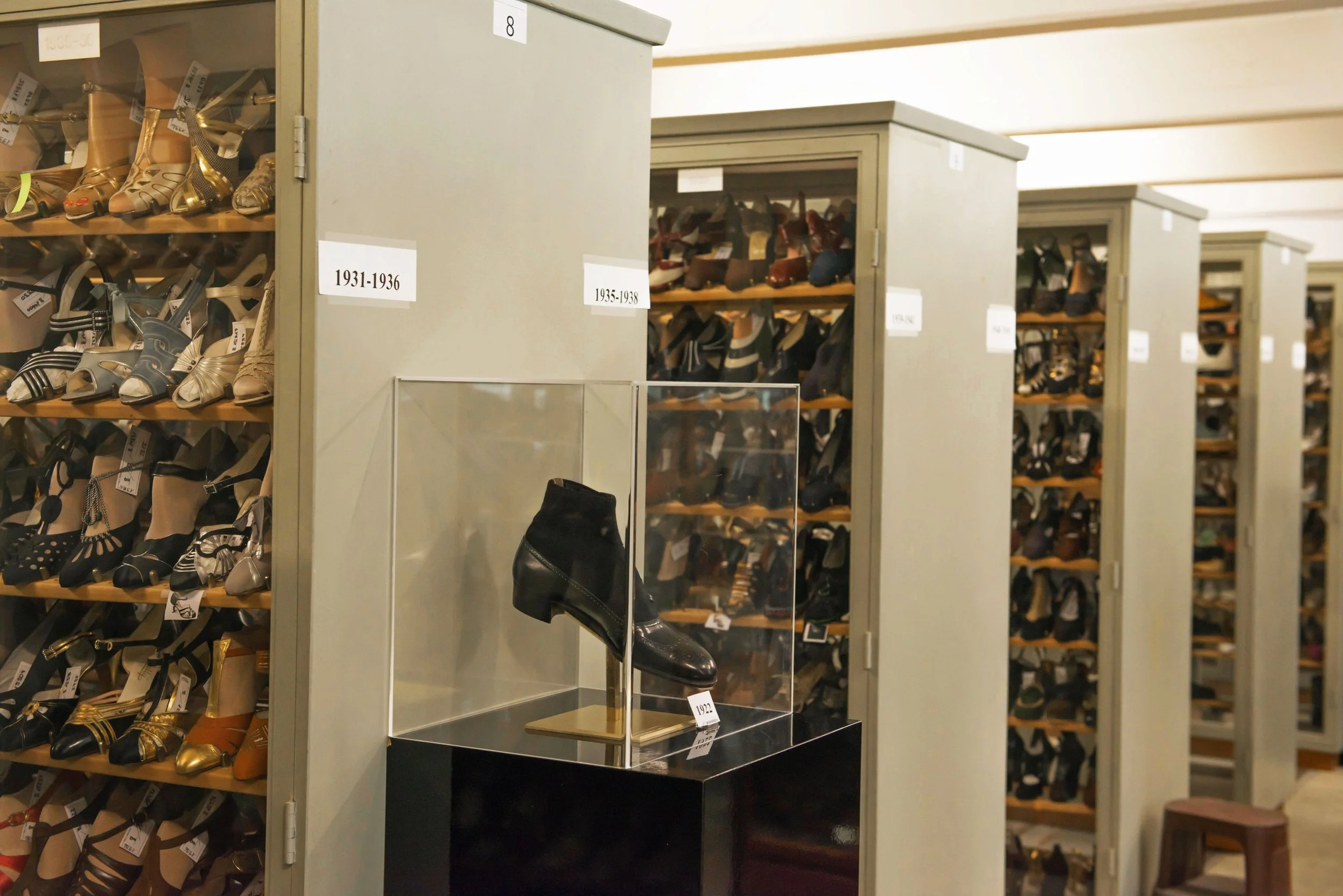When Shoe Heritage is on Display: The Museums and Archives Directory
© 2024 Archive of the Bally Shoe Factories LTD.
Have you ever visited a footwear exhibition? If you’ve not been to one physically, you may have accessed a museum’s shoe collection online.
Over the last decade, fashion exhibitions have become magnets for visitors, and since the pandemic, virtual exhibitions have experienced a boom. This article introduces you to a study on shoe museums’ web presence and presents the Footwear Research Network’s Museums and Archives Directory.
As part of my PhD studies in Digital Fashion Communication at USI – Università della Svizzera italiana (Lugano, Switzerland), my supervisor, Prof. Lorenzo Cantoni, and I have taken on the task of compiling an overview of publicly available shoe museums and collections worldwide with an online presence.
Being the first of its kind on institutions that exhibit shoes, we analysed what types of content and services they offer online and to what extent they digitally enable access to their collections. In a scattered map, we showed how much shoe museums rely on digitally enhanced access to their collection compared to the service and institutional information they provide on their websites.
Our research interest in historical shoes comes from the Heritage & Innovation Project, managed by the Lifestyle Tech Competence Center (Lugano, Switzerland), in which Prof. Cantoni and I collaborate with other partners, such as Swiss fashion brand Bally.
Founded in 1851, Bally possesses a rich historical archive of shoes, bags and accessories, ready-to-wear, posters, photos, etc. With over 35,000 pairs (from their own production and beyond), it is considered one of the most extensive shoe archives worldwide.
The USI team is examining how Bally’s digitised corporate fashion heritage can be used for public communication. To tackle the topic, we started by benchmarking other institutions that exhibit shoes as part of their collection.
In July 2023, we presented the study “When shoe heritage is on display” at the FACTUM 23 Conference in Pisa (Italy), which was themed “Fashion communication: between tradition and future digital developments”.
Some key findings: On the one hand, the 39 analysed shoe museums typically provide a good amount of service and institutional information for potential visitors to the physical premises, such as their opening hours and ticket prices. On the other hand, only a minority offer digitally enabled access to their collections, such as through virtual tours or online exhibitions.
However, we identified one cluster of six shoe museums (prominent publicly owned general museums or managed by world-famous shoe companies) that invest broadly in their web presence. To find out who they are, find the full open-access paper here.
If you would like to check out a shoe museum now (physically or virtually), you do not have to start with a Google search. The Footwear Research Network’s new Museums and Archives Directory builds upon our study and offers a list of institutions by country that publicly exhibit footwear. Check them out using the button below…
